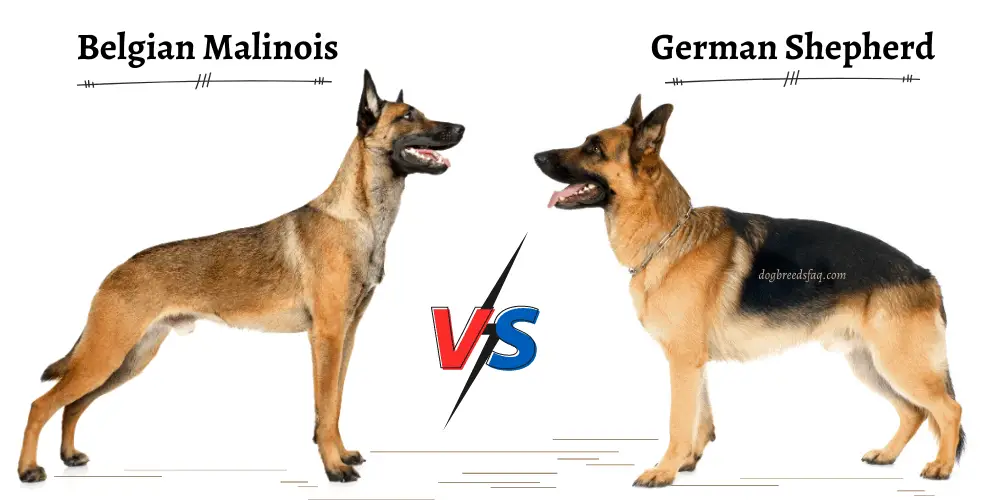This article is going to pit one breed against another, the Belgian Malinois vs. German Shepherd, to identify common, different, good, bad, or dangerous traits.
There are many things to unpack about both breeds, and all of the following information will assist you in determining whether or not either breed is right for you.
Let’s jump in.
Watch the Video or ( Continue Reading )
Two Breeds that Often Compete
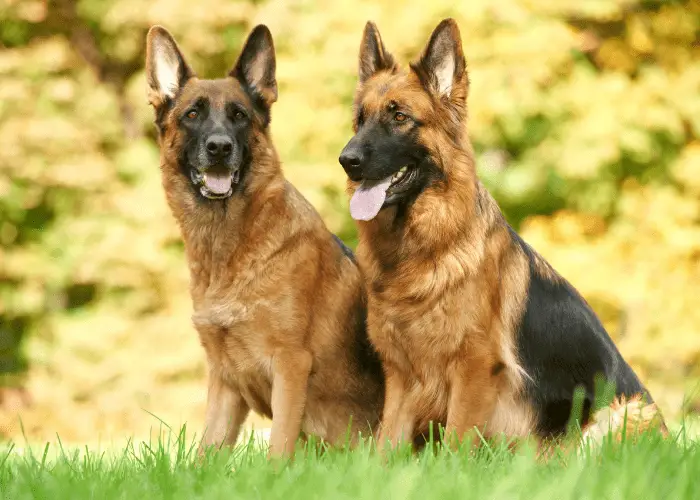
Whether you’re a K9 enthusiast or a cat lover, you’ve probably heard about the German Shepherd.
Everybody has, at some point in their lives. They’re often associated with some of the “most notorious or dangerous breeds” out there like Chow Chows, Pit-Bull Terriers, Rottweilers, or Dobermans.
The truth is, any dog can be aggressive, and any breed can be poorly raised. Most people who are afraid of German Shepherds as a breed are people who have never owned one or were inexperienced dog owners.
Folks who wound up with a fluff-ball puppy that didn’t understand what they were getting themselves into.
German Shepherds haven’t ranked the #2 most popular breed out there for nothing, though. When an owner knows what they’re doing, German Shepherds are beloved by owners, trainers, and families alike.
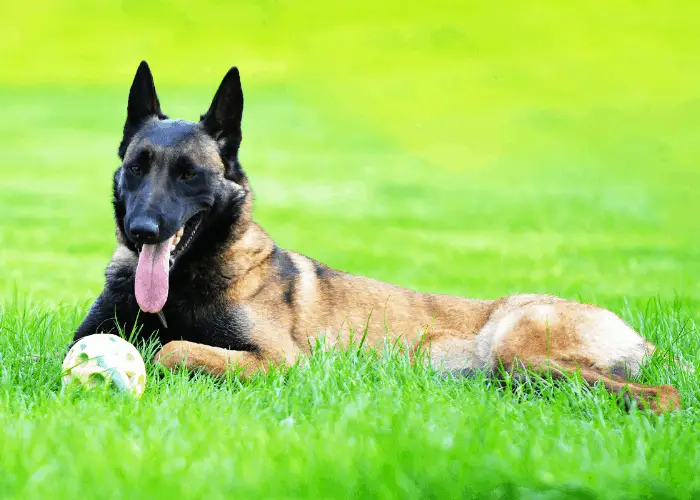
The Belgian Malinois is a similar breed in a lot of ways- we’ll be getting into their traits, looks, behaviors, etc. soon.
Even though they share many similarities, for some reason, the Belgian Malinois never achieved household name status like the German Shepherd.
Despite it being less known, the Belgian Malinois is nipping at the heels of the German Shepherd. Often, they compete against each other (whether they know it or not) for jobs.
But not only for jobs. According to AKC, the Belgian Malinois ranks 43rd out of 196 breeds in popularity (which is a steep climb in recent years.)
The numbers indicate that the Belgian Malinois is growing in popularity on the world scene, and is cementing its purpose in the world of working-class breeds.
The following information will acquaint you with both breeds and will open your eyes to a couple of things that you may not have known about either of them.
Is a Belgian Malinois Better than a German Shepherd?
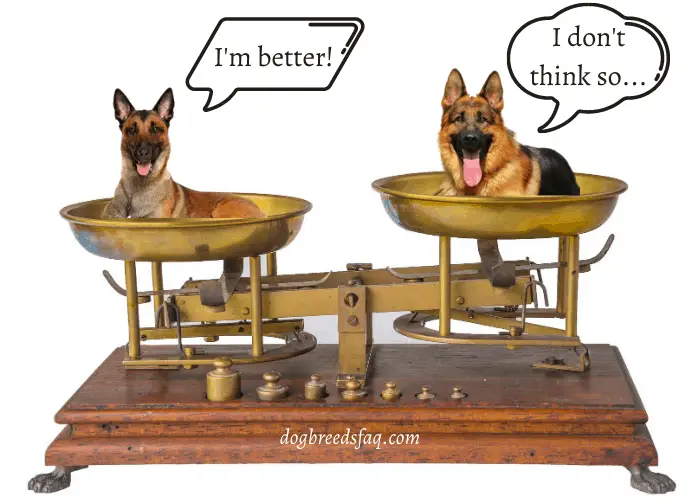
This is a loaded question that has an equally loaded answer. Shepherd enthusiasts would, of course, say that a German Shepherd is better, while Mal owners would say theirs is better. Kind of like a Coke vs. Pepsi argument.
Is the Belgian Malinois better than a German Shepherd?
The answer is yes, and no.
Or, to make it more blurry- it depends. What’s the purpose? Is it for security, a home pet, search and rescue, military, or drug and bomb detection?
Let’s make some comparisons that we can make while not appearing to have a dog in the fight (pun intended).
Ready?
Belgian Malinois vs. German Shepherd Size & Weight
Both breeds can maintain an athletic and muscular build when nutrition and exercise are up to par. However, they do differ from one another.
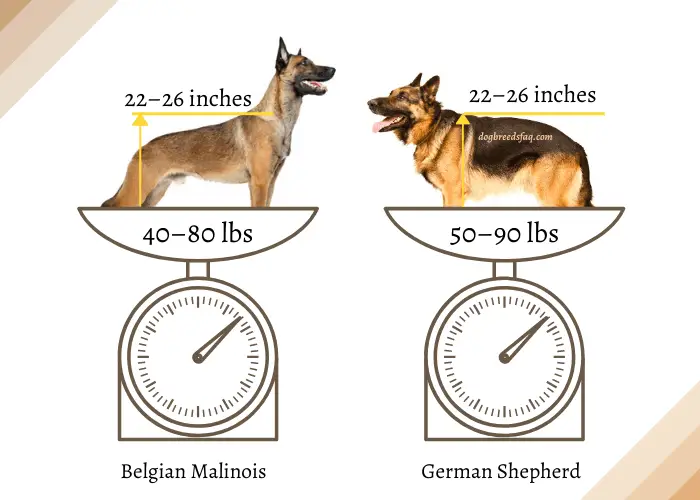
Height
Males for both breeds stand at 24-26 inches at the shoulder, with females standing at 22-24 inches.
Because they share the same height ranges, the Belgian Malinois gives off a sleeker appearance than the Shepherd, due to the differences in weight.
Weight
The German Shepherd is the larger of the two when it comes to weight, generally by around 10 percent.
Male German Shepherds range from 65-90 pounds, with females weighing in at anywhere between 50-70 pounds.
Male Belgian Malinois weigh in between 60-80 pounds, and females range between 40-60 pounds.
Temperament
A dog’s temperament is the general nature of the dog breed. This is often confused with how it’s brought up. Any breed’s upbringing can dramatically impact what the result of the dog’s attitude is going to be.
The following information about each breed’s temperament is what comes naturally to the dog. How these temperaments are dealt with is what will dictate whether or not it will be a well-behaved and even-keeled pet.
German Shepherd
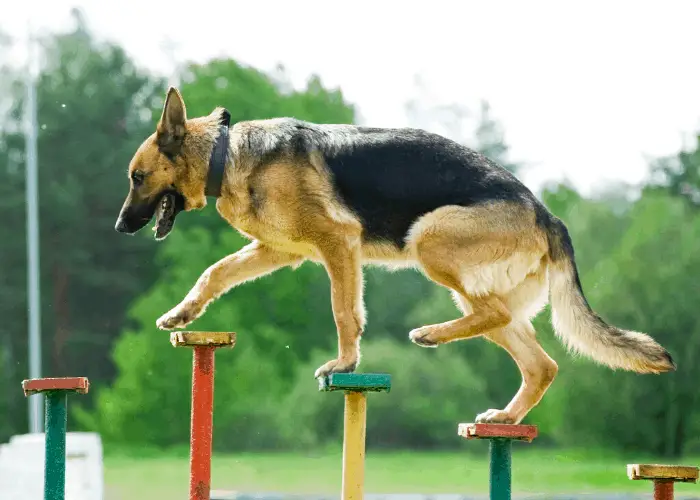
By nature, the German Shepherd is obedient, courageous, alert, curious, intelligent, loyal, confident, and watchful.
German Shepherds are famous for working well in high-pressure situations, having the ability to keep a cool head, and staying on task. They are thinkers and observers who excel in problem-solving.
Their dedication and love for their owners make them a great family dog if they are trained properly.
When German Shepherds are given daily opportunities to focus all of their strengths positively and purposefully, many of the problems that the above traits can produce are trained out of the dog.
Troubles come when they are left to their own devices, and their strengths aren’t given proper focus.
If the owner doesn’t give the dog purpose and direction toward where to place all of those traits, it will find its own.
[ Read German Shepherd Pros and Cons Here ]
Belgian Malinois
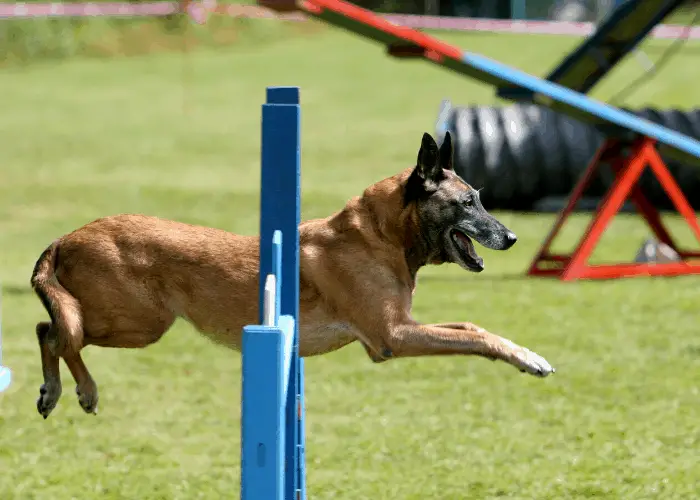
By nature, the Belgian Malinois is hard working, friendly, stubborn, watchful, active, protective, alert, intelligent, and confident.
The Belgian Malinois tends to be more demanding as well as stubborn than the German Shepherd. It requires more attention in the early stages of their lives to eliminate the potential for stubbornly holding on to unsavory habits.
On the other hand, they crave the attention of their owners and tend to be less independent than German Shepherds.
Ample family time, people familiarization, and love will make the Mal a solid member of the family. But stern training is necessary to give the dog focus and purpose in the right direction.
Still, some have determined that this breed is not recommended for families with small children who behave erratically.
[ QUESTION: Are Belgian Malinois Good With Other Dogs? ]
Similar Traits, yet Not the Same
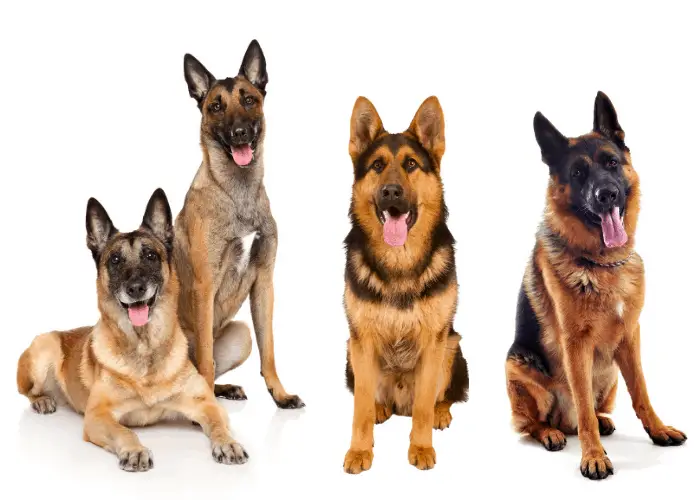
As you can see above, both dogs share a lot of the same general traits. Both make for outstanding working dogs, as well as having the potential to be loving and loyal family dogs.
Both need to have opportunities to flourish in their strengths often, to develop good habits, and to burn off some energy- both mental and physical.
Training, physical exercise, and problem-solving exercises will reap fewer problems at home (particularly as youthful dogs.)
Though they’re similar in temperament, they’re not the same. Both need attention, but the Malinois needs a bit more throughout the early years.
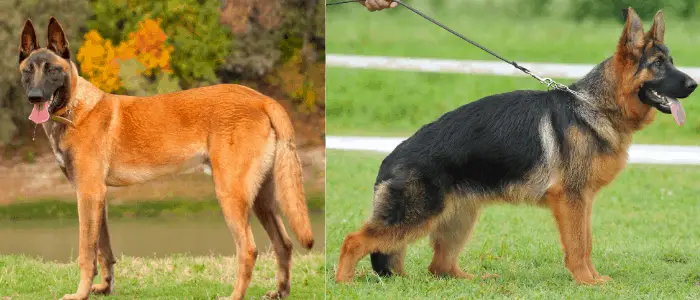
Coat:
German Shepherd
The coat of the German Shepherd is double-coated at a medium length down the back and hind legs, with shorter fur about the head and paws. Their fur is characterized as a dense and harsh overcoat, with a soft undercoat.
Belgian Malinois
The Belgian Malinois coat is double-coated at a shorter length than the Shepherds. Their fur has a smooth uniform appearance- flat and straight.
Colors:
German Shepherd
German Shepherds have a wide range of solid colors, as well as color combinations. Solid colors can be black, blue, gray, liver, sable, or white. Bi-colored Shepherds tend to be mostly black and tan but aren’t always the rule. Black and red is also another popular combination.
Belgian Malinois
The two basic color combinations found in a Belgian Malinois are a rich fawn color with black-tipped fur or mahogany with black-tipped fur. Typically, the face is masked in black as well as the ears.
Life Expectancy
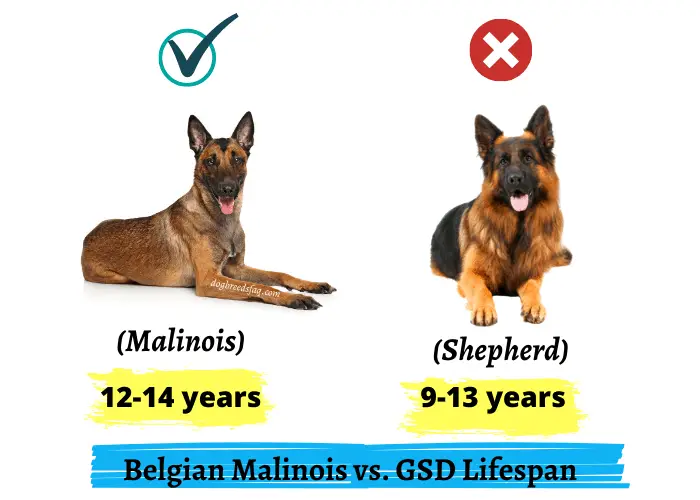
Which of the two breeds has a longer lifespan? The answer for this would be the Belgian Malinois. Mals’ life expectancy comes close to double that of a Shepherd.
- German Shepherd– 9-13 years
- Belgian Malinois– 12-14 years
Belgian Malinois vs. German Shepherd Shedding
Both breeds need their nails taken down occasionally to prevent them from causing the dog from painful steps. As far as their coat goes, surprisingly, the Belgian Malinois tends to shed more than the Shepherd and requires more thorough brushing.
- German Shepherd– Occasional brushing, about once or twice a week.
- Belgian Malinois– Thorough brushing once or twice a week. This breed sheds heavily twice per year.
Exercise
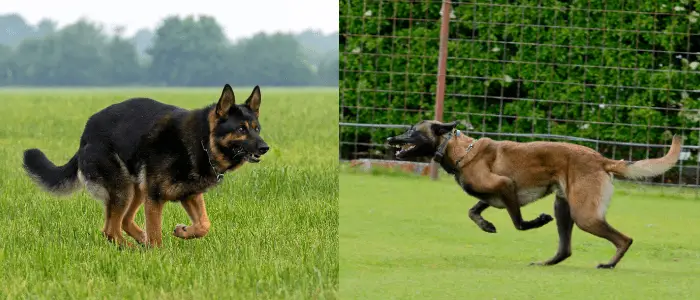
Both breeds need plenty of exercise to keep them healthy and happy. But between the two, the Malinois needs more exercise to release some of that boundless energy.
- German Shepherd– Needs about 90 minutes of exercise per day.
- Belgian Malinois– Needs about 120 minutes of exercise per day.
Trainability
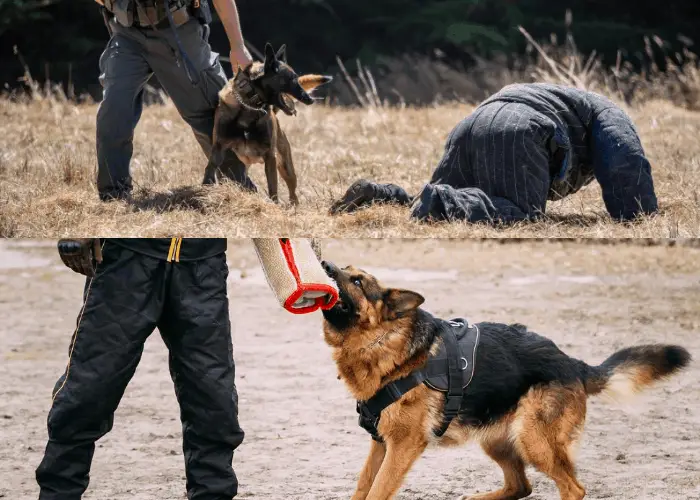
Neither one of these dogs have flies on them compared to other breeds when it comes to being trainable. But between the two, the Malinois is known to be slightly easier to train than the Shepherd. This is attributed to being a little more eager to please than the Shepherd, who can often be a bit more independent.
Aggression
While the German Shepherd can be good with people, it can be aloof with strangers. The same is true for the Belgian Malinois. Owners of both breeds said that German Shepherd shows less aggression than the Belgian Malinois.
Feeding
Being the bigger dog, it comes to no surprise that the German Shepherd needs to eat more food, and can be more expensive as it relates to feeding.
Health
Between the two breeds, the Mal is known to be generally healthier. All this means is that there are fewer health risks to worry about genetically.
- German Shepherd– Degenerative Myelopathy, Elbow – Hip Dysplasia, and abdomen bloat are among the most common problems that can come with a Shepherd.
- Belgian Malinois– Hip – Elbow Dysplasia, and certain types of eye problems can be common problems for the Belgian Malinois.
Belgian Malinois vs. German Shepherd for Protection
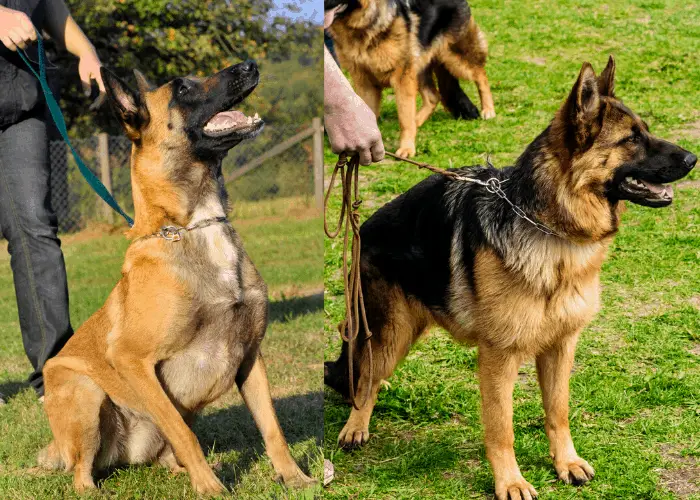
Between the two, the Belgian Malinois is growing in reputation to be the better dog for protection. Partly due to its more agile frame, but there’s one thing that German Shepherds do that the Mal doesn’t.
German Shepherds are more prone to relax from time to time, and the Mal doesn’t seem to have an off switch. It’s always ready to go and is often known to jump into action before a trainer has completed the command.
This can be seen as a good thing and a bad thing for the Belgian Malinois. For a lot of owners, the energy levels and constant brace for being on the go is a little much to handle.
On the other hand, that same constant diligence can make them a more effective breed for protection. In the end, it comes down to what an owner is willing and able to handle.
Unlike the Malinois, the Shepherd can know when to hold’em and know when to fold’em. It’s alert when it needs to be, and relaxed when it doesn’t need to be so diligent.
Belgian Malinois vs. German Shepherd Bite Force
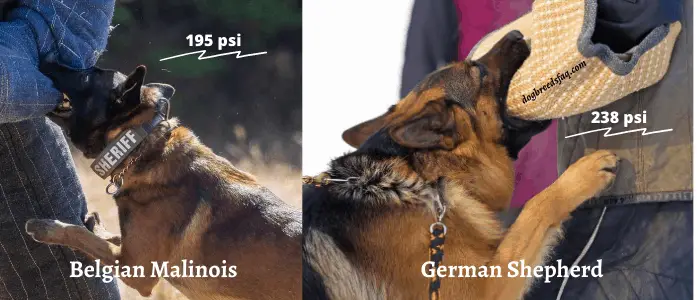
There’s no perfect science when it comes to calculating a dog’s bite force because it’s tough to tell a dog to bite something as hard as it can. Studies have to be repeated over and over to get an approximation.
Between the two, Shepherd’s bite was found to have more force measured in psi.
- German Shepherd- The bite force was measured to be about 238 psi.
- Belgian Malinois- The Bite force of the Mal came in at around 195 psi.
It might satisfy some curiosity to learn that the #1 dog breed relating to biting force is the Kangal, coming in at 743 psi. I bring this up to show you how effective the Shepherd and the Mal are, though neither of them has an incredibly strong bite compared to other breeds.
Belgian Malinois vs. German Shepherd for Police Work
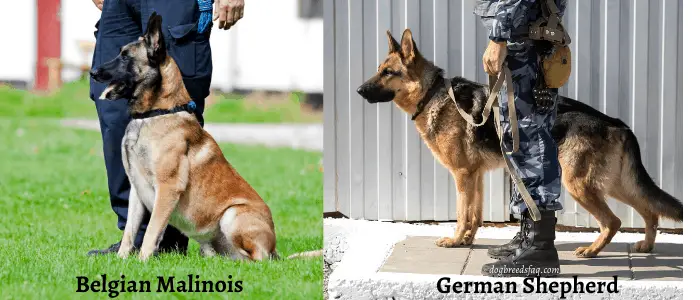
Please make sure to keep in mind throughout these comparisons that both dogs are very intelligent and are good at what they do- much better than other breeds.
It all comes down to who does what better between the two. I just want to emphasize that.
Steadily over time (more so in Europe than the United States), the Belgian Malinois has been incrementally replacing the German Shepherd for police work for many of the reasons listed above.
The German Shepherd has done a great job over time, and for decades has been a solid staple of the police force.
The Belgian Malinois has been found to do a little better and able to continue to do better for many years longer per dog. That’s the bottom line.
Are Belgian Malinois and German Shepherds Related?
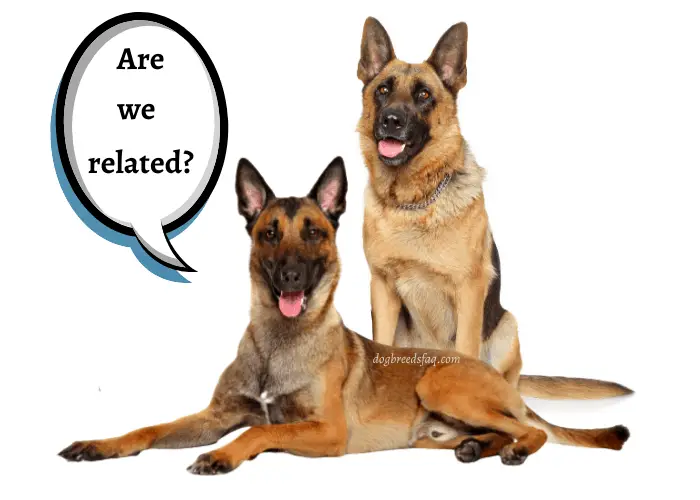
To look at them, you’d instantly make that assumption, wouldn’t you?
They do look like they should be related.
All dog breeds are connected, depending on how far back you’re willing to go. As far as the history covering the past several thousand years- no, they are not related.
In a way, the fact that they are not directly related is rather astonishing when you consider the similarities between the two breeds.
The following is some information that will help us to understand the lineage of these two breeds, and why they harbor the much-valued traits that owners enjoy.
History:
German Shepherd
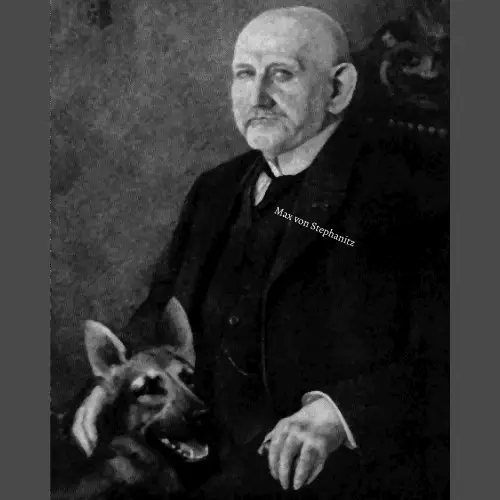
Unfortunately, exactly which breeds of German sheepdogs were involved in the formulation of the German Shepherd has been lost to time.
Back in the 1850s, different communities across Germany bred sheepdogs from a variety of other types, intending to meet their needs at the time.
A man by the name of Max von Stephanitz (image credits) made it his goal to make the perfect and standardized breed that fulfills every need required from a sheep herding dog.
In 1899, Max attended a dog show that featured a breed that was generationally bred that matched all of his expectations.
He wound up purchasing the dog and spent years afterward promoting and refining the breed, resulting in the German Shepherd that we recognize today.
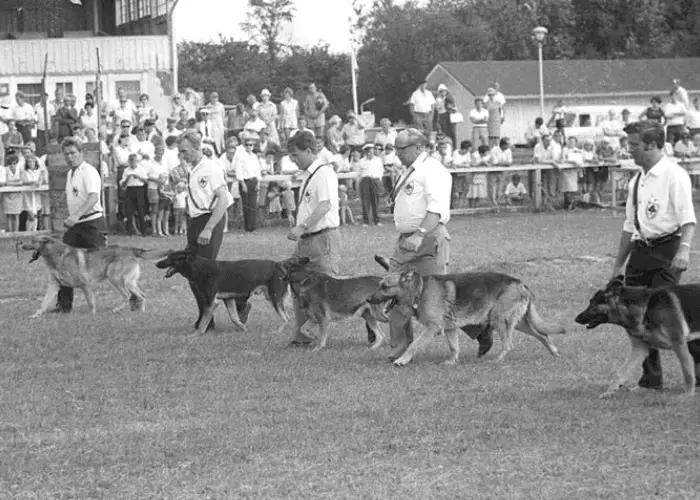
While perfecting his vision of the breed, he founded the Society for German Shepherd Dogs, (image credits) and it didn’t take long before the breed began to grow in popularity.
It’s a worker and has a proven track record of being outstanding in the military, security, and as a police dog.
You might like to read our article about Dog training commands in the German Language.
Did you Know?
- After World War 1, the German Shepherd’s name was changed to maintain its popularity due to anti-German sentiments. The breed’s name was changed to “Alsatian Wolf Dog” after the French area of Alsace.
- Eventually, because people were getting the wrong idea about the dog, the “Wolf Dog” part was removed from its name. It was then referred to as the “Alsatian” for the next five decades.
- In 1977, purists and dog-enthusiasts leveled pressure against the British Kennel Club to revert the name of the breed to the German Shepherd. The BKC conceded and changed the name, but still held on to the Alsatian name in one way or the other, until eventually done away with permanently in 2010.
Belgian Malinois
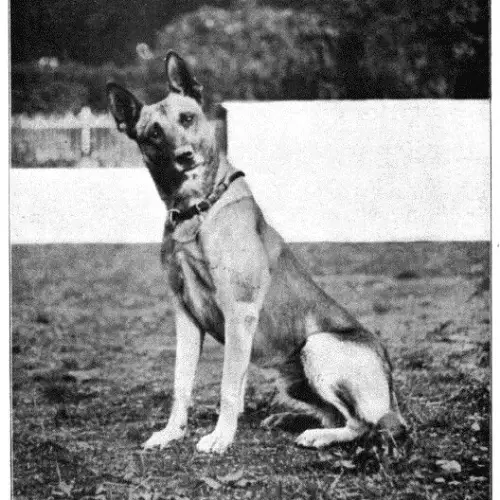
Herding dogs were bred widely across Europe in the 1800s, not just in Germany.
And because of this, it is difficult to find direct ancestry or the exact breed combination that resulted in the Malinois. All for the same reasoning that we find with the German Shepherd.
However, the Belgian Malinois is classified together with the Tervuren, Laekenois, and Groenendael as a single breed mutually known as the Belgian Sheepdogs. That much has been determined.
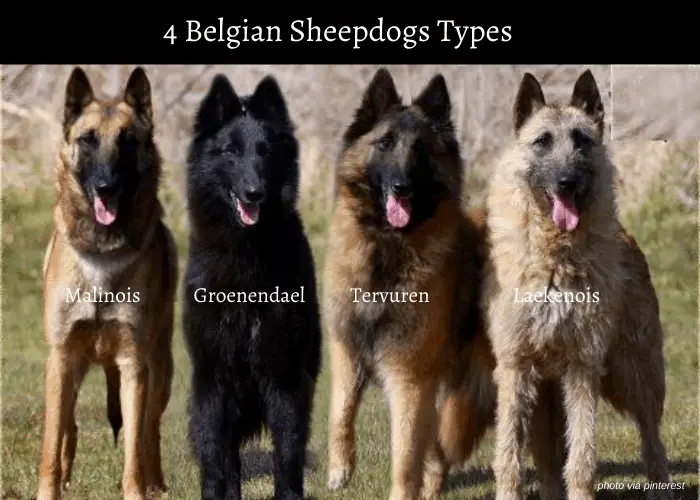
Malinois gets its name from the city of Malines, which is in the northwestern region of Belgium. The breed was first bred in that area in the 1880s.
This particular breed of Belgian Sheepdog was quickly recognized for its intelligence, and capabilities while successfully herding all kinds of livestock.
Before long, it was recognized that the Malinois was capable of doing many things that its counterparts didn’t do so well in.
Its talents as a working dog and its intelligence promoted it to become well versed in other areas such as law enforcement, security, and military purposes.
Did You Know?
- When Seal Team-6 was brought into Pakistan in 2011 to capture or otherwise remove Osama Bin Laden, it was a Belgian Malinois named Cairo who went in with them. He also helped to guard the area against other Al-Qaeda members while the team was searching out the property.
- More recently, in 2019, a hero was made from another Malinois that assisted in the removal of Abu Bakr al-Baghdadi, leader of the terrorist organization ISIS. It was the dog who chased Baghdadi through the tunnels when it was wounded by the explosion of Baghdadi’s suicide vest.
- Fortunately, the dog made its full recovery, and was later honored by the President of the United States and labeled a hero of the mission.
Why are Belgian Malinois Replacing German Shepherds for Military & Law Enforcement Use?
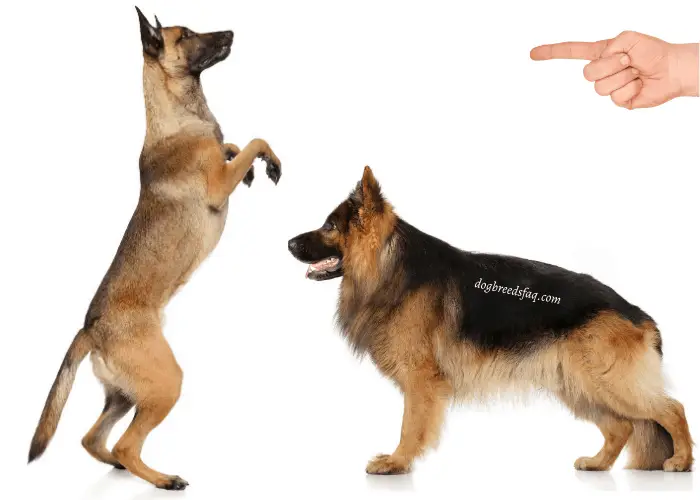
There are several good reasons why it seems that the Belgian Malinois is slowly replacing the German Shepherd out in the workforce.
Due to its sleeker and lighter frame, the Belgian Malinois is generally much faster and more energetic than the Shepherd.
They are a wiser investment for the police force and military because they can have more years’ worth of service out of a Mal than a Shepherd due to life expectancy constraints.
Also, the Belgian Malinois’ health potential is taken into consideration as well. A lot of time, effort, and money go into training a dog for police work or military service. The bottom line is getting the most for the money and effort.
Another reason is their differences in coats. Though the Shepherd might be easier to take care of overall, they don’t handle heat as well as the Malinois.
The Belgian Malinois’ fur is shorter, and it has an easier time handling more diverse or extreme temperatures.
Belgian Malinois vs German Shepherd Price
A Belgian Malinois price for a puppy will range from $1.5K – $2.5K USD whereas A German Shepherd puppy price is $300 – $900 USD.
Belgian Malinois or German Shepherd for My Family?

Both breeds are capable of being good family dogs. Still, more caveats come with the Belgian Malinois than with the German Shepherd.
When it comes to the family, the German Shepherd takes the lead. Though the Malinois is known to be easier to train, they are not easier to manage.
Super high energy, more aggressiveness, and the potential of being more anxious around small children make the Belgian Malinois a lesser choice in this regard.
Belgian Malinois Vs German Shepherd Summary
[wptb id=28720]
Conclusion
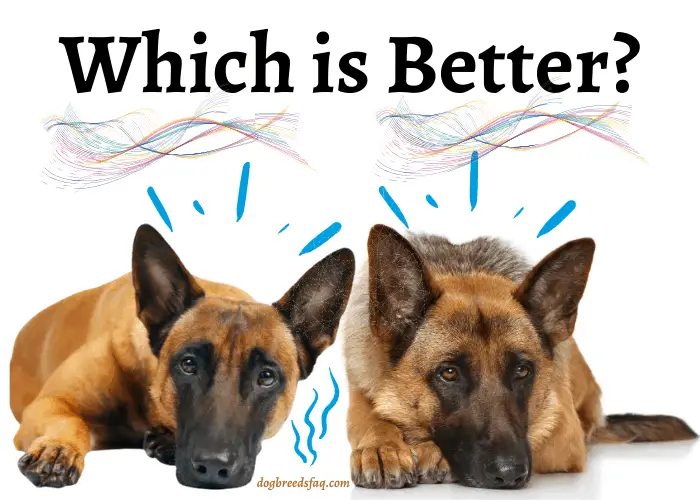
So, (Belgian Malinois vs German Shepherd) which is better?
As you can see, it all comes down to what you are looking for.
Though they’re similar in a lot of ways, their differences can have a large impact on who’s better.
If you’re looking for a guard dog that will defend your property, both will work, but the Belgian Malinois will work out better through solid training.
As we’ve seen, police and military have found the Belgian Malinois to be the better choice for their purposes.
However, here’s why the German Shepherd is ranked #2 as the most popular dog by AKC. The family.
They will protect the yard, love the kids, and serve diligently as a pet, protector, and a part of the family, more level-headedly than the Belgian Malinois.

